Retrocomputing
==============
<!--
SPDX-FileCopyrightText: Copyright (c) 2012-2024 Chris Pressey, Cat's Eye Technologies
SPDX-License-Identifier: CC-BY-NC-ND-4.0
-->
* display-illustration: false
* image_url: https://catseye.tc/modules/dungeons-of-ekileugor/images/dungeons-of-ekileugor.png
This document contains stuff done at Cat's Eye Technologies on older computers
(or more often, an emulation of such a computer on a modern computer).
When a project of ours depends upon some particular retrotechnology,
we try to have an entry for that dependency in our
[Project Dependencies](../article/Project%20Dependencies.md) article, where
we describe what modern alternatives, such as emulators, there are for getting
such a project up and running.
#### Apple Befunge
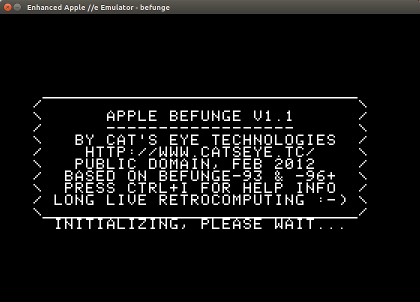
* main article: *[Apple Befunge][]*
**[Apple Befunge][]** is a variant of Befunge for the [Apple II][] which resembles
Befunge-93, with some extra Befunge-96-esque instructions and some Apple II-specific
instructions. It was written for the Apple ][+, but should also run on an Apple //e.
#### Dungeons of Ekileugor
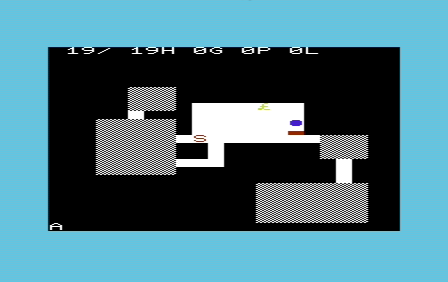
* main article: *[Dungeons of Ekileugor][]*
**[Dungeons of Ekileugor][]** is a roguelike written for the *unexpanded* [Commodore VIC-20][], which,
despite the limitations of that platform, supports a respectable set of the usual "dungeon furniture":
reasonably generated dungeon levels with tunnels and rooms (the contents of which are only revealed
when entered), monsters, treasure, potions, traps, chests, combat with experience points, etc.
#### Bubble Escape
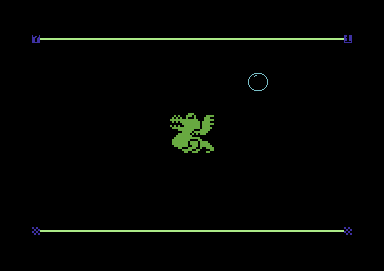
* main article: *[Bubble Escape][]*
**[Bubble Escape][]** is a video game written for the Commodore 64 where the player must guide a bubble through
a multi-screen maze. It was originally designed and implemented in [Commodore BASIC 2.0][] in the mid-80's, and
rewritten in the 6502 assembly language [Ophis Assembler][] in the late 00's. The assembly version was pared down
and crunched so that it fit into 2 kilobytes, christened "Bubble Escape 2K", and submitted to the
[Mini Game Compo 2009][] where it won first place in its class.
#### DiskSumo
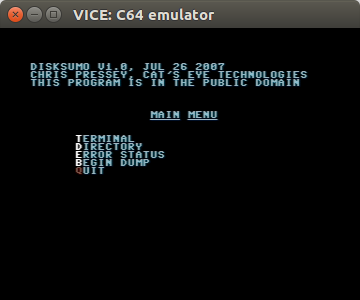
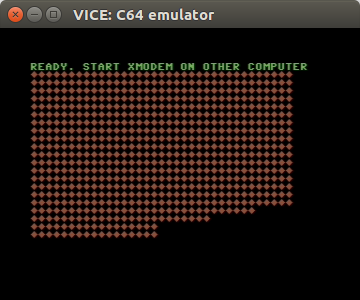
* main article: *[DiskSumo][]*
**[DiskSumo][]** is a program to transfer disk images off a [Commodore 64][] over the RS-232 port via the
XMODEM protocol at 300 baud.
#### SITU-PAN

**[SITU-PAN][]** is a front-panel switches simulator for the [Commodore 64][]. It displays 8 virtual LEDs
and 8 virtual dip switches on the screen. The LEDs display the bit pattern at the current address in memory.
Via the keyboard, the switches may be toggled, a new bit pattern written into memory, and the address advanced.
In this way, machine code programs may be entered into memory, and then run.
SITU-PAN was written during [RetroChallenge 2015/07][] for the purposes of entering SITU-MON into an emulated C64.
#### SITU-MON
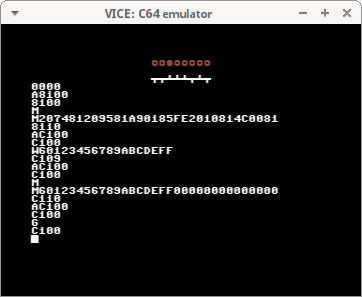
**[SITU-MON][]** is a machine language monitor for [6502][]-based systems, written (by hand!) during
[RetroChallenge 2015/07][] and entered into an emulated Commodore 64 using SITU-PAN.
#### SITU-SOL
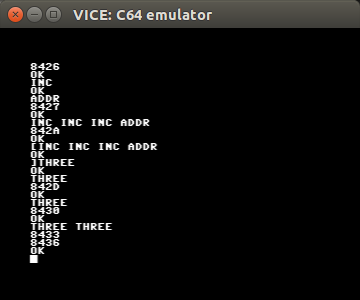
**[SITU-SOL][]** is a vaguely Forth-like language which was designed and implemented (by hand!) during
[RetroChallenge 2015/07][], and entered into an emulated Commodore 64 using SITU-MON. While it might be
technically usable as a programming system, it fell rather short of its goal, which was to allow the
computer to be programmed in a way that does not require writing the program out by hand.
#### SixtyPical
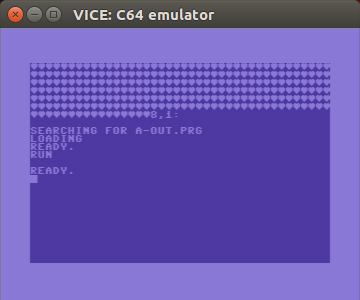
* main article: *[SixtyPical][]*
**[SixtyPical][]** is a very low-level programming language, similar to [6502][] assembly,
supporting a sophisticated static analysis which can catch many common mistakes at compile-time.
Its reference compiler can generate code for several 6502-based platforms, including the
[Commodore 64][], the [Commodore VIC-20][], the [Apple II][], and the [Atari 2600][].
Several tiny demos and a demonstration 1K game have been written in it.
#### BefOS
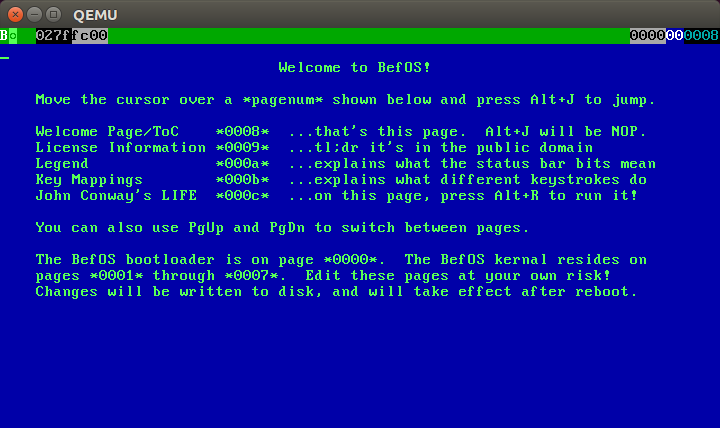
* main article: *[BefOS][]*
**[BefOS][]** is an "operating system" for the [IBM PC compatible][] architecture.
The phrase "operating system" is in scare quotes for a very good reason; it's not
really an operating system at all, it's a glorified sector editor.
#### Shelta
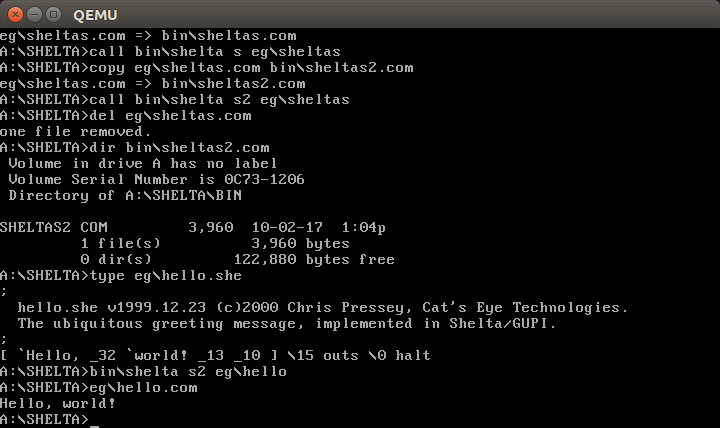
* main article: *[Shelta][]*
**[Shelta][]** is an extremely minimal Forth-like language with barely any semantics; it relies on inline
machine code to write anything resembling an actual program in it. In the spirit of compilers for languages
such as [FALSE][] and [brainfuck][], a Shelta-to-8086 compiler was implemented (with help from Ben Olmstead) in
less than 512 bytes of 80286 machine code. What's more, it's also been bootstrapped — that is to say, a
Shelta compiler was written in Shelta, which was compiled with the original compiler, and then compiled
again with the resulting compiler, producing a wholly self-hosted executable!
Shelta can be built under any system with a [NASM][] assembler,
but requires [MS-DOS][] (or compatible) to run, and the executables it produces also
run only under [MS-DOS][] (unless you take exceptional measures).
#### ILLGOL
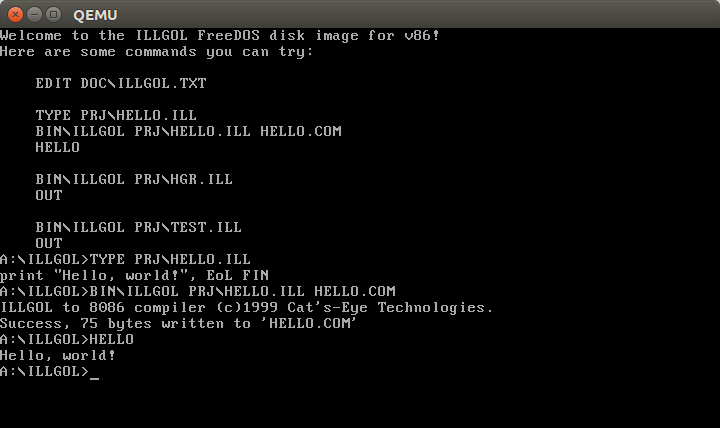
* main article: *[ILLGOL][]*
**[ILLGOL][]** is an illness disguised as a programming language empire.
ILLGOL can be built and run on any system with a decent [ANSI C][]
compiler, such as `gcc`, but the executables it produces
will only run under [MS-DOS][] (or compatible).
#### Mildred

* main article: *[Mildred][]*
**[Mildred][]** is a 4MHz [Z80][]-based homebrew computer with 40K of memory (8K EEPROM, 32K SRAM.)
#### The Never-Ending Maze
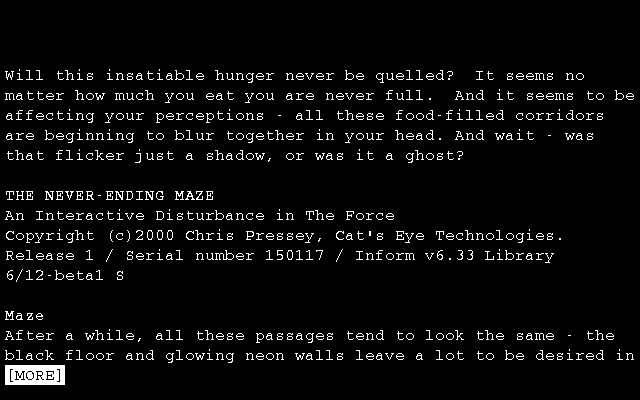
* main article: *[The Never-Ending Maze][]*
**[The Never-Ending Maze][]** is an Infocom-style text adventure game (a [Z-Machine][] story file)
based on the defining cultural phenomenon of a generation. (Possibly.)
[6502]: ../article/Project%20Dependencies.md#6502
[ANSI C]: ../article/Project%20Dependencies.md#ansi-c
[Apple Befunge]: ../article/Languages.md#apple-befunge
[Apple II]: ../article/Project%20Dependencies.md#apple-ii
[Applesoft BASIC]: ../article/Project%20Dependencies.md#applesoft-basic
[Atari 2600]: https://catseye.tc/view/The-Dossier/article/Atari%202600%20Games%20of%20Note.md
[BefOS]: ../article/Platforms.md#befos
[Blurry Memories of DOS Programming]: ../view/The-Dossier/article/Blurry%20Memories%20of%20DOS%20Programming.md
[brainfuck]: https://esolangs.org/wiki/brainfuck
[Bubble Escape]: ../article/Games.md#bubble-escape
[Commodore 64]: ../article/Project%20Dependencies.md#commodore-64
[Commodore 64 Programmer's Reference Guide]: https://catseye.tc/view/The-Dossier/article/An%20Esolang%20Reading%20List.md#commodore-64-programmers-reference-guide
[Commodore BASIC 2.0]: ../article/Project%20Dependencies.md#commodore-basic-2-0
[Commodore VIC-20]: ../article/Project%20Dependencies.md#commodore-vic-20
[DiskSumo]: ../article/Tools.md#disksumo
[Dungeons of Ekileugor]: ../article/Games.md#dungeons-of-ekileugor
[FALSE]: https://esolangs.org/wiki/FALSE
[ILLGOL]: ../article/Languages.md#illgol
[JaC64]: ../article/Forks.md#jac64
[Mildred]: ../article/Electronics%20Projects.md#mildred
[Mini Game Compo 2009]: ../article/Events.md#mini-game-compo-2009
[MS-DOS]: ../article/Project%20Dependencies.md#ms-dos
[NASM]: ../article/Project%20Dependencies.md#nasm
[Ophis Assembler]: ../article/Project%20Dependencies.md#ophis-assembler
[RetroChallenge 2015/07]: ../article/Events.md#retrochallenge-2015-07
[Shelta]: ../article/Languages.md#shelta
[SITU-MON]: ../article/Tools.md#situ-mon
[SITU-PAN]: ../article/Tools.md#situ-pan
[SITU-SOL]: ../article/Languages.md#situ-sol
[SixtyPical]: ../article/Languages.md#sixtypical
[The Dossier]: ../article/General%20Information.md#the-dossier
[The Never-Ending Maze]: ../article/Games.md#the-never-ending-maze
[Z-Machine]: ../article/Project%20Dependencies.md#z-machine
[Z80]: ../article/Project%20Dependencies.md#z80